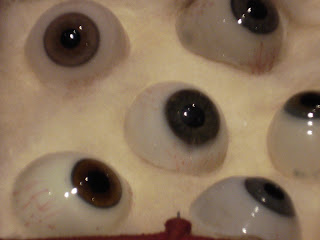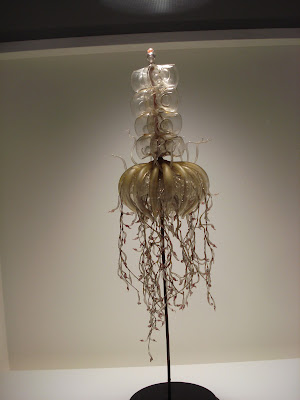Spent a few days in the East/Northeast section of Nova Scotia, known as Cape Breton. If you make it to Nova Scotia, you must spend a little time up here. Drenched in magnificent scenery, water, water everywhere. Inhabited by Indians, French and British, 50,000 Scots came here in the first half of the 19th century and made their mark. Many of the signs have the name in English and then in Gaelic. Below is one such sign.
It's hard to capture the beauty of the scenery in pictures. On the Northwest side of the island is the Cabot Trail, a loop through their national park that has a coastal road that rivals the Pacific Coast Highway through Big Sur. Below, two pictures on the Cabot Trail Loop.
On the Eastern coast is the Fortress of Louisbourg, an expensive fortress put up by the French over 28 years (finished in 1740) to protect their never freezing port of Louisbourg from attack. The port was one of the busiest in North America for a time, shipping 20 million pounds of cod/year to Europe (more profitable than fur trading). The fortress was well protected from the sea, but vulnerable from the land and the British overran the fort twice, finally destroying the fort in 1758.
They have reconstructed some of the fortress (above), with many docents in period costumes as if it were the 1740's; guides were excellent, on the scale of Williamsburg.
Can you guess what musical instrument is shown below in one of the officer quarters?
Yes, folks, this is a hurdy-gurdy, a string instrument; I can't say I have ever seen one.
There are so many scenic vistas, it's hard to give you a true perspective. Below, the Celtic Lodge, located on the Cabot Trail; had lunch there. Nice view from your room, yes?
Oh, yes, they do have their moose here; we did not see many, but did get a good visit from this one. Notice he is looking at you.
Alexander Graham Bell, originally from Scotland, invented the telephone and became internationally famous after the Philadelphia Centennial Expositon in 1876. After winning the French "Volta" prize in 1880 (worth $10,000) he became wealthy enough to devote full time to his experiments. Eventually he moved to Baddeck in Cape Breton. There he continued his work, including the founding of the Aerial Experiment Association with Glenn Curtiss, among others. There is an excellent museum in Baddeck honoring Bell.
Above, a full size replica of the Silver Dart, first aeroplane to fly in Canada. This airplane was actually flown several years ago; the pilot was a Canadian astronaut. Pretty cool.
The museum is set up on high ground overlooking the bay in Baddeck; below a picture that doesn't do justice to how pretty the scene was.













































